
3 mai 2010 | Categories: 1940..., 1942..., 1944..., 1945..., Aducere-Aminte..., Andrei D.MITUCA..., Articol Propriu..., Campanii Militare Celebre..., Cercetare si Creatie Militara..., COMEMORARE ca dispret pentru UITARE..., Credinte..., Idei Mistuitoare..., Ideographie..., Imaginatie MILITARA..., Imagini de pe Front..., Imaginile VREMII..., ISTORIE Nepatrunsa..., Istorii NEAPUSE..., Lucruri care nu se POT UITA..., OBSESII care au schimbat LUMEA..., Preocuparile POPOARELOR..., Simboluri MILITARE..., Simboluri..., StahlHelm..., State Beligerante..., Tehnika MILITARA..., U.S.Army..., Uncategorized, WorldWar II... | Lasă un comentariu

3 mai 2010 | Categories: 1942..., 1944..., 1945..., Aducere-Aminte..., Andrei D.MITUCA..., Articol Propriu..., Idei Mistuitoare..., Ideographie..., Istorii NEAPUSE..., OBSESII care au schimbat LUMEA..., Preocuparile POPOARELOR..., Simboluri MILITARE..., Simboluri..., WorldWar II... | Lasă un comentariu
Master of the Sword and The Patton Saber…
Following the 1912 Olympics, Patton traveled with his family to Dresden, Berlin, and Nuremberg. Seeking the greatest swordsman in Europe to study with, Patton was told the “beau sabreur” of the French Army would be the one. Adjutant M. Clèry was a French “master of arms” and instructor of fencing at the Cavalry School at Saumur. Patton went to Saumur for intense study with the master. Upon his return, Patton wrote a report that was revised for the Army and Navy Journal. Patton’s first article for the Cavalry Journal appeared in the March 1913 issue. In the summer of 1913, after he advised the Ordnance Department on sword redesign, Patton was allowed to return to Saumur to study once again under Clèry.
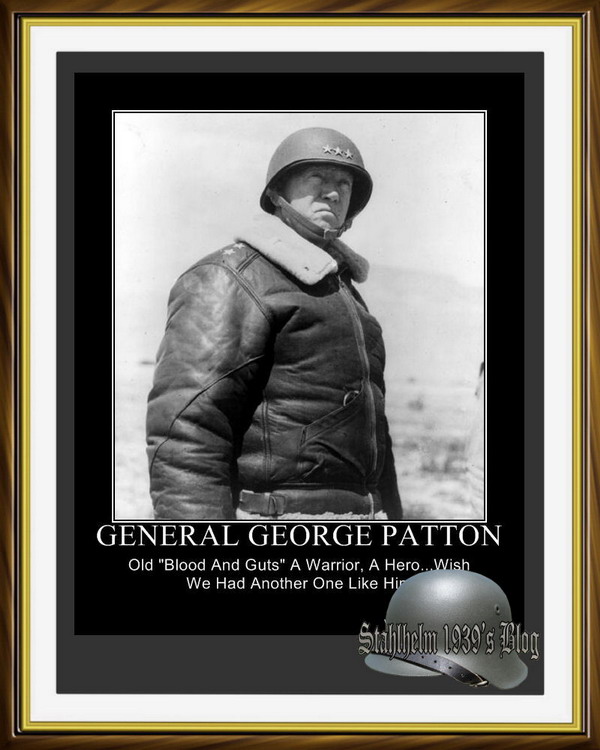
Lieutenant Patton was made the Army’s youngest-ever „Master of the Sword” at the Mounted Service School at Fort Riley, Kansas. While Master of the Sword, Patton became an instructor at Fort Riley and improved and modernized the Army’s cavalry saber fencing techniques.
Earlier in the year, he assisted in the design of the Model 1913 Cavalry Saber. It had a large, basket-shaped hilt mounting a straight, double-edged, thrusting blade designed for use by light cavalry. Patton’s 1914 manual „Saber Exercise” outlined a system of training for both mounted and on foot use of the saber. The weapon came to be known as the „Patton Saber.” There is no one sword that this saber was modeled after. Patton suggested the revision from a curved sword and edge and cutting technique to a thrusting style of attack, following his extensive training in France. Patton’s thoughts were expressed in his 1913 report „The Form and Use of the Saber”:
In the Peninsula War the English nearly always used the sword for cutting. The French dragoons, on the contrary, used only the point which, with their long straight swords caused almost always a fatal wound. This made the English say that the French did not fight fair. Marshal Saxe wished to arm the French cavalry with a blade of a triangular cross section so as to make the use of the point obligatory. At Wagram, when the cavalry of the guard passed in review before a charge, Napoleon called to them, „Don’t cut! The point! The point!”
The weapon was never used as intended. At the beginning of U.S. involvement in World War I, several American cavalry units armed with sabers were sent to the front but they were held back; the nature of war had changed, making horse-mounted troops easy prey for enemy troops equipped with Gewehr 98 rifles and MG08 machine guns. However, Patton took his style of move forward and attack technique to his use of the tank in battle. This became his trademark combat style.
Punitive Expedition into Mexico…
During the Punitive Expedition of 1916, Patton was assigned to the 8th Cavalry Regiment at Fort Bliss, Texas. He served as aide to then-Brigadier General John J. Pershing in his pursuit of Pancho Villa, after Villa’s forces had crossed into New Mexico, raided and looted the town of Columbus, and killed several Americans. Patton, accompanied by ten soldiers of the 6th Infantry Regiment, and using three armored cars, conducted the United States’ first armored vehicle attack, and in the process killed two Mexican leaders, including „General” Julio Cardenas, commander of Villa’s personal bodyguard. The bodies were brought back from San Miguelito to Pershing’s headquarters strapped to the hoods of the vehicles in a manner similar to game animals brought back by hunters. For this action, as well as Patton’s affinity for the Colt Peacemaker, Pershing titled Patton his „Bandito.” Patton’s success in this regard gained him a level of fame in the United States, and he was featured in newspapers across the nation.
2 mai 2010 | Categories: 1939..., 1940..., 1942..., 1944..., 1945..., Aducere-Aminte..., Andrei D.MITUCA..., Articol Imprumutat Cuminte..., Articol Propriu..., Campanii Militare Celebre..., Cercetare si Creatie Militara..., COMEMORARE ca dispret pentru UITARE..., Credinte..., GENERALI CELEBRII..., GENII MILITARE..., GENII..., Idei Mistuitoare..., Ideographie..., Imaginatie MILITARA..., Imagini de pe Front..., Imaginile VREMII..., ISTORIE Nepatrunsa..., Istorii NEAPUSE..., Lucruri care nu se POT UITA..., Mari STRATEGI..., Muzica Vremii..., Personalitati MILITARE..., Preocuparile POPOARELOR..., Presa Vremii..., Puterea DOCTRINEI..., Puterea IMAGINII..., Sarbatoarea VICTORIEI..., Simboluri MILITARE..., Simboluri..., StahlHelm..., State Beligerante..., Thomas Robert MALTHUS..., U.S.Army..., WorldWar II... | 4 comentarii
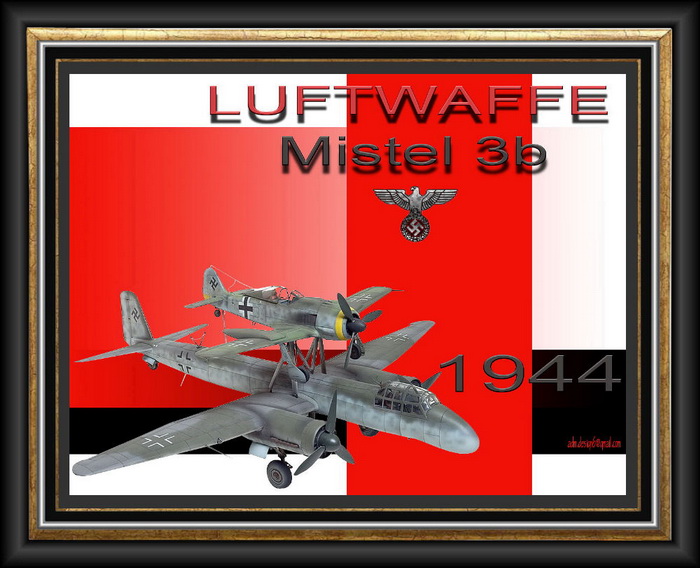
1 mai 2010 | Categories: 1944..., 1945..., Aducere-Aminte..., AfrikaKorps..., Andrei D.MITUCA..., Articol Propriu..., BlitzKrieg..., Campanii Militare Celebre..., Cercetare si Creatie Militara..., COMEMORARE ca dispret pentru UITARE..., Credinte..., Disciplina GERMANA..., GENII MILITARE..., GENII..., Idei Mistuitoare..., Ideographie..., Imagini de pe Front..., Imaginile VREMII..., ISTORIE Nepatrunsa..., Istorii NEAPUSE..., Lirica GERMANA..., Lucruri care nu se POT UITA..., LuftWAFFE..., Muzica Vremii..., Nevoile GERMANIEI MARI..., OBSESII care au schimbat LUMEA..., Personalitati MILITARE..., Preocuparile POPOARELOR..., Puterea DOCTRINEI..., Puterea IMAGINII..., Sarbatoarea VICTORIEI..., Simboluri MILITARE..., Simboluri..., StahlHelm..., State Beligerante..., Tehnika MILITARA..., Wehrmacht..., WorldWar II... | Lasă un comentariu
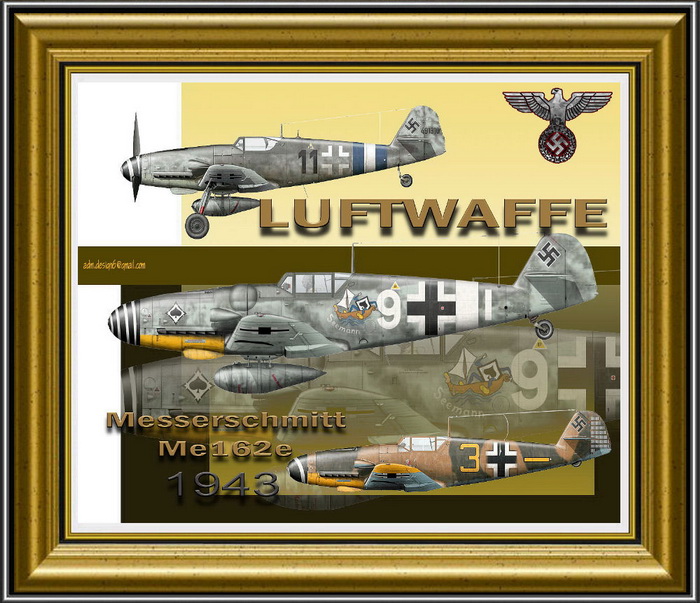
1 mai 2010 | Categories: 1944..., 1945..., Aducere-Aminte..., AfrikaKorps..., Andrei D.MITUCA..., Articol Propriu..., BlitzKrieg..., Campanii Militare Celebre..., Cercetare si Creatie Militara..., COMEMORARE ca dispret pentru UITARE..., Credinte..., Disciplina GERMANA..., Friedrich SCHILLER..., GENII MILITARE..., GENII..., Idei Mistuitoare..., Ideographie..., Imagini de pe Front..., Imaginile VREMII..., ISTORIE Nepatrunsa..., Istorii NEAPUSE..., Lirica GERMANA..., Lucruri care nu se POT UITA..., LuftWAFFE..., Nevoile GERMANIEI MARI..., Parada Militara..., Personalitati MILITARE..., Preocuparile POPOARELOR..., Puterea DOCTRINEI..., Puterea IMAGINII..., Sarbatoarea VICTORIEI..., Simboluri MILITARE..., Simboluri..., StahlHelm..., State Beligerante..., Tehnika MILITARA..., Wehrmacht..., WorldWar II... | Lasă un comentariu

1 mai 2010 | Categories: 1944..., 1945..., Aducere-Aminte..., Andrei D.MITUCA..., Articol Propriu..., BlitzKrieg..., Campanii Militare Celebre..., Cercetare si Creatie Militara..., COMEMORARE ca dispret pentru UITARE..., Credinte..., Disciplina GERMANA..., GENII MILITARE..., Idei Mistuitoare..., Ideographie..., Imagini de pe Front..., Imaginile VREMII..., ISTORIE Nepatrunsa..., Istorii NEAPUSE..., Lucruri care nu se POT UITA..., LuftWAFFE..., Nevoile GERMANIEI MARI..., OBSESII care au schimbat LUMEA..., Preocuparile POPOARELOR..., Puterea DOCTRINEI..., Puterea IMAGINII..., Sarbatoarea VICTORIEI..., Simboluri MILITARE..., Simboluri..., StahlHelm..., State Beligerante..., Tehnika MILITARA..., Wehrmacht..., WorldWar II... | Lasă un comentariu
„The high spirit of sportsmanship and generosity manifested throughout speaks volumes for the character of the officers of the present day. There was not a single incident of a protest or any unsportsmanlike quibbling or fighting for points which I may say, marred some of the other civilian competitions at the Olympic Games. Each man did his best and took what fortune sent them like a true soldier, and at the end we all felt more like good friends and comrades than rivals in a severe competition, yet this spirit of friendship in no manner detracted from the zeal with which all strove for success.”

Patton at Virginia Military Institute
Patton attended Virginia Military Institute for one year, where he rushed VMI’s chapter of the Kappa Alpha Order. He then transferred to theUnited States Military Academy. The Academy compelled him to repeat his first „plebe” year because of his poor performance in mathematics. He repeated his plebe year with honors and was appointed Cadet Adjutant (the second highest position for a cadet), eventually graduating in 1909 instead of 1908 and receiving his commission as a cavalry officer.
Patton participated in the 1912 Summer Olympics in Stockholm in the first-ever modern pentathlon. He placed sixth out of 37 contestants in 300 meter freestyle swimming. Patton was third out of 29 fencers. In the equestrian cross-country steeplechase, he was among the three riders who turned in perfect performances, but he placed third because of his time. Patton „hit the wall” 50 yards (46 m) from the finish line of the four kilometer cross-country footrace, then fainted after crossing the line at a walk. He finished third out of 15 contestants. He finished fifth overall
In pistol shooting, Patton placed 20th out of 32 contestants. He used a .38 caliber pistol, while most of the other competitors chose .22 caliber firearms. He claimed that the holes in the paper from early shots were so large that some of his later bullets passed through them, but the judges decided he missed the target completely once. Modern competitions on this level frequently now employ a moving background to specifically track multiple shots through the same hole. There was much controversy, but the judges’ ruling was upheld. Patton neither complained, nor made excuses. Patton’s only comment was:
„The high spirit of sportsmanship and generosity manifested throughout speaks volumes for the character of the officers of the present day. There was not a single incident of a protest or any unsportsmanlike quibbling or fighting for points which I may say, marred some of the other civilian competitions at the Olympic Games. Each man did his best and took what fortune sent them like a true soldier, and at the end we all felt more like good friends and comrades than rivals in a severe competition, yet this spirit of friendship in no manner detracted from the zeal with which all strove for success.”
30 aprilie 2010 | Categories: 1939..., 1940..., 1942..., 1944..., 1945..., Aducere-Aminte..., Andrei D.MITUCA..., Articol Imprumutat Cuminte..., Campanii Militare Celebre..., Cercetare si Creatie Militara..., COMEMORARE ca dispret pentru UITARE..., Credinte..., Friedrich SCHILLER..., GENERALI CELEBRII..., GENII MILITARE..., GENII..., Idei Mistuitoare..., Ideographie..., Imaginatie MILITARA..., Imaginile VREMII..., ISTORIE Nepatrunsa..., Istorii NEAPUSE..., Mari STRATEGI..., Muzee..., Nevoile GERMANIEI MARI..., OBSESII care au schimbat LUMEA..., Parada Militara..., Personalitati MILITARE..., Preocuparile POPOARELOR..., Puterea DOCTRINEI..., Puterea IMAGINII..., Sarbatoarea VICTORIEI..., Simboluri MILITARE..., Simboluri..., StahlHelm..., State Beligerante..., Tehnika MILITARA..., Thomas Robert MALTHUS..., U.S.Army..., Uncategorized, WorldWar II... | Lasă un comentariu
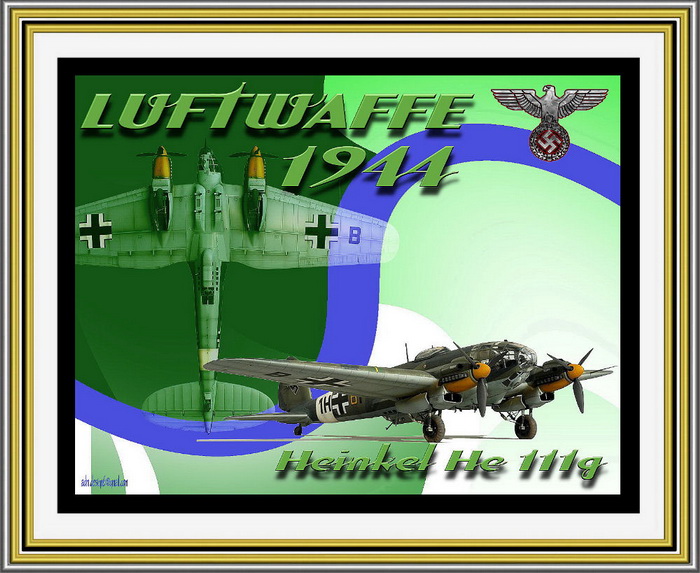
29 aprilie 2010 | Categories: 1944..., 1945..., Aducere-Aminte..., AfrikaKorps..., Andrei D.MITUCA..., Articol Propriu..., BlitzKrieg..., Campanii Militare Celebre..., Cercetare si Creatie Militara..., COMEMORARE ca dispret pentru UITARE..., Credinte..., Disciplina GERMANA..., Friedrich SCHILLER..., Idei Mistuitoare..., Ideographie..., Imaginatie MILITARA..., Imagini de pe Front..., Imaginile VREMII..., ISTORIE Nepatrunsa..., Istorii NEAPUSE..., Lucruri care nu se POT UITA..., LuftWAFFE..., Muzee..., Muzica Vremii..., Nevoile GERMANIEI MARI..., Personalitati MILITARE..., Preocuparile POPOARELOR..., Presa Vremii..., Puterea DOCTRINEI..., Puterea IMAGINII..., Sarbatoarea VICTORIEI..., Simboluri MILITARE..., Simboluri..., StahlHelm..., State Beligerante..., Tehnika MILITARA..., Thomas Robert MALTHUS..., Uncategorized, Wehrmacht..., WorldWar II... | Lasă un comentariu
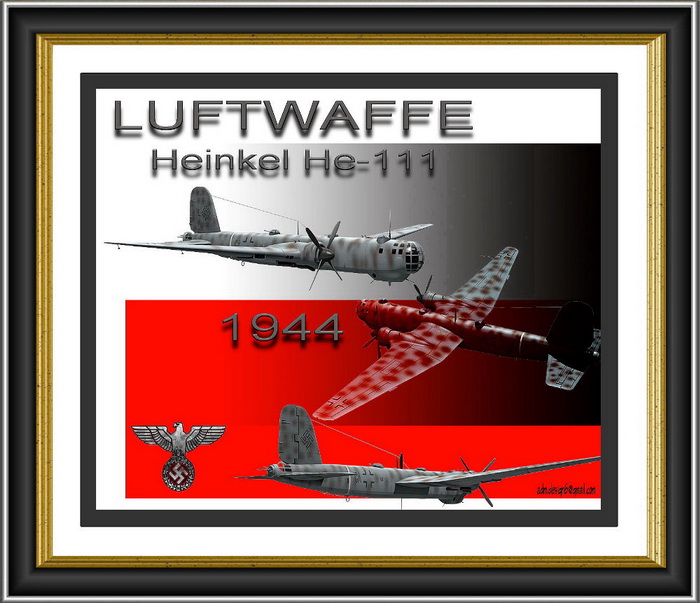
29 aprilie 2010 | Categories: 1944..., 1945..., Aducere-Aminte..., AfrikaKorps..., Andrei D.MITUCA..., Articol Propriu..., BlitzKrieg..., Campanii Militare Celebre..., COMEMORARE ca dispret pentru UITARE..., Credinte..., Disciplina GERMANA..., GENII..., Idei Mistuitoare..., Ideographie..., Imaginatie MILITARA..., Imaginile VREMII..., ISTORIE Nepatrunsa..., Istorii NEAPUSE..., Lirica GERMANA..., Lucruri care nu se POT UITA..., LuftWAFFE..., Muzee..., Nevoile GERMANIEI MARI..., Preocuparile POPOARELOR..., Puterea DOCTRINEI..., Puterea IMAGINII..., Sarbatoarea VICTORIEI..., Simboluri MILITARE..., Simboluri..., State Beligerante..., Tehnika MILITARA..., Thomas Robert MALTHUS..., Wehrmacht..., WorldWar II... | Lasă un comentariu

28 aprilie 2010 | Categories: 1945..., Andrei D.MITUCA..., Articol Propriu..., Idei Mistuitoare..., Ideographie..., Istorii NEAPUSE..., LuftWAFFE..., OBSESII care au schimbat LUMEA..., Preocuparile POPOARELOR..., Puterea DOCTRINEI..., Puterea IMAGINII..., Sarbatoarea VICTORIEI..., Simboluri MILITARE..., Simboluri..., StahlHelm..., State Beligerante..., Tehnika MILITARA..., Thomas Robert MALTHUS..., WorldWar II... | Lasă un comentariu
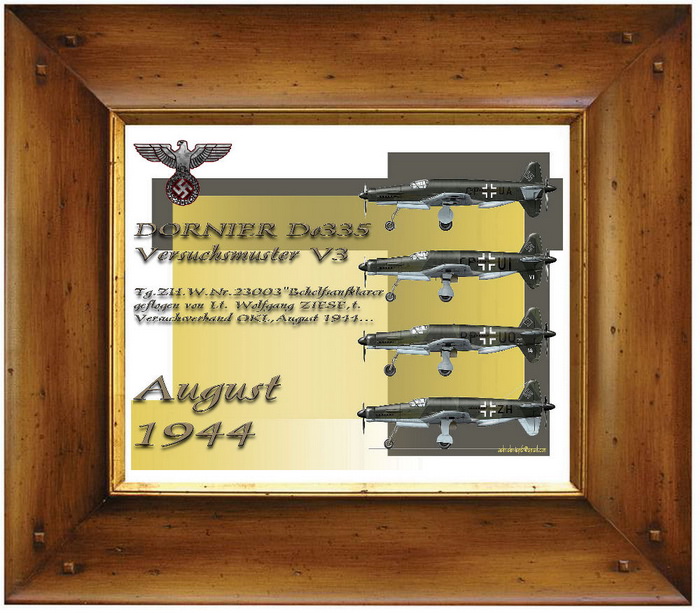
28 aprilie 2010 | Categories: 1940..., 1942..., 1944..., 1945..., Aducere-Aminte..., AfrikaKorps..., Andrei D.MITUCA..., Articol Propriu..., BlitzKrieg..., Cercetare si Creatie Militara..., COMEMORARE ca dispret pentru UITARE..., Disciplina GERMANA..., Idei Mistuitoare..., Ideographie..., Imagini de pe Front..., Imaginile VREMII..., ISTORIE Nepatrunsa..., Istorii NEAPUSE..., Lucruri care nu se POT UITA..., LuftWAFFE..., OBSESII care au schimbat LUMEA..., Preocuparile POPOARELOR..., Simboluri MILITARE..., Simboluri..., StahlHelm..., State Beligerante..., Tehnika MILITARA..., Uncategorized, WorldWar II... | Lasă un comentariu

28 aprilie 2010 | Categories: 1942..., 1944..., 1945..., Aducere-Aminte..., AfrikaKorps..., Andrei D.MITUCA..., Articol Propriu..., BlitzKrieg..., Campanii Militare Celebre..., Cercetare si Creatie Militara..., Credinte..., Disciplina GERMANA..., Idei Mistuitoare..., Ideographie..., Imaginatie MILITARA..., Imagini de pe Front..., Imaginile VREMII..., ISTORIE Nepatrunsa..., Istorii NEAPUSE..., Lirica GERMANA..., Lucruri care nu se POT UITA..., LuftWAFFE..., Nevoile GERMANIEI MARI..., Preocuparile POPOARELOR..., Simboluri MILITARE..., Simboluri..., State Beligerante..., Tehnika MILITARA..., Uncategorized, Wehrmacht..., WorldWar II... | Lasă un comentariu
Family…
George Smith Patton was born in San Gabriel Township, California (in what is now the city of San Marino), to George Smith Patton, Sr. (1856–1927) and Ruth Wilson (1861–1928). Although he was technically the third George Smith Patton, he was given the name Junior. The Pattons were an affluent family of Scottish descent.

As a boy, Patton read widely in classics and military history. Patton’s father was an acquaintance of John Singleton Mosby, a noted cavalry leader of the Confederate Army in the American Civil War who served first under J.E.B. Stuart and then as a guerrillafighter. The younger Patton grew up hearing Mosby’s stories of military glory. From an early age, the young Patton sought to become a general and hero in his own right.
Patton came from a long line of soldiers, including General Hugh Mercer of the American Revolution.[3] A great-grandfather, John M. Patton, was a governor of Virginia. His grandfather, Colonel George S. Patton, was killed during the Battle of Opequon. Colonel Patton was promoted to brigadier general by the Confederate Congress, but, at the time, had already died of battle wounds, so that the promotion was never official. A great-uncle, Waller T. Patton, died of wounds received in Pickett’s Charge during the Battle of Gettysburg. Two other great-uncles, John M. Patton and Isaac Patton, served as colonels in the Confederate States Army, while yet another great uncle, William T. Glassell, was a Confederate States Navy officer. Another relative, Hugh Weedon Mercer, was a Confederate general.
His seventh great-grandfather was Louis Dubois, a French Huguenot immigrant, who with 11 others founded the town of New Paltz, New York. Another of Patton’s ancestors was Francis Gregory, a first cousin of George Washington. Gregory married Francis Thornton III, a first cousin twice removed from James Madison and three times removed from Zachary Taylor.
Patton’s paternal grandparents were Colonel George Smith Patton and Susan Thornton Glassell. Patton’s grandfather, born inFredericksburg, graduated from Virginia Military Institute (VMI), Class of 1852, second in a class of 24. After graduation, George Smith Patton studied law and practiced in Charleston. When the American Civil War broke out, he served in the 22nd Virginia Infantry of the Confederate States of America.
Patton’s grandfather left behind a namesake son, born in Charleston, Virginia (now West Virginia). The second George Smith Patton (born George William Patton in 1856, changing his name to honor his late father in 1868) was one of four children. Graduating from the Virginia Military Institute in 1877, Patton’s father served as L.A. County District Attorney and the first City Attorney for the city of Pasadena, California and the first mayor of San Marino, California. He was a Wilsonian Democrat.
His maternal grandparents were Benjamin Davis Wilson, (December 1, 1811 to March 11, 1878), the namesake of Southern California’s Mount Wilson, and his second wife, Margaret Hereford. Wilson was a self-made man who was orphaned in Nashville, Tennessee, came to Alta California as a fur trapper and adventurer during the Indian Wars before marrying Ramona Yorba, the daughter of a Californio land baron, Bernardo Yorba, and made his fortune through the wedding dowery, receiving Rancho Jurupa, settling what would become California’s San Gabriel Valley, after the Mexican American War.
Patton married Beatrice Banning Ayer (January 12, 1886–September 30, 1953), the daughter of wealthy textile baron Frederick Ayer, on May 26, 1910. They had three children, Beatrice Smith (March 19, 1911–October 24, 1952), Ruth Ellen Patton Totten (February 28, 1915–November 25, 1993), who wrote The Button Box: A Loving Daughter’s Memoir of Mrs. George S. Patton, and George Patton IV (December 24, 1923–June 27, 2004), who rose to the rank of major general. A cousin of George S. Patton was Democratic Congressman from Georgia Larry McDonald, who was aboard Korean Air Lines Flight 007 when it was shot down by the Soviets just west of Sakhalin Island on September 1, 1983.
27 aprilie 2010 | Categories: 1939..., 1940..., 1942..., 1944..., 1945..., Aducere-Aminte..., Andrei D.MITUCA..., Articol Imprumutat Cuminte..., Articol Propriu..., Campanii Militare Celebre..., Cercetare si Creatie Militara..., COMEMORARE ca dispret pentru UITARE..., GENERALI CELEBRII..., GENII MILITARE..., GENII..., Idei Mistuitoare..., Ideographie..., Imaginatie MILITARA..., Imaginile VREMII..., ISTORIE Nepatrunsa..., Istorii NEAPUSE..., Lucruri care nu se POT UITA..., Mari STRATEGI..., OBSESII care au schimbat LUMEA..., Personalitati MILITARE..., Preocuparile POPOARELOR..., Puterea DOCTRINEI..., Puterea IMAGINII..., Sarbatoarea VICTORIEI..., Simboluri MILITARE..., Simboluri..., StahlHelm..., State Beligerante..., Thomas Robert MALTHUS..., U.S.Army..., Uniforme MILITARE..., WorldWar II... | Lasă un comentariu
25 aprilie 2010 | Categories: 1939..., 1940..., 1942..., 1944..., 1945..., Aducere-Aminte..., Andrei D.MITUCA..., Articol Imprumutat Cuminte..., Articol Propriu..., Campanii Militare Celebre..., Cercetare si Creatie Militara..., COMEMORARE ca dispret pentru UITARE..., Credinte..., GENERALI CELEBRII..., GENII MILITARE..., GENII..., Idei Mistuitoare..., Ideographie..., Imaginatie MILITARA..., Imaginile VREMII..., ISTORIE Nepatrunsa..., Istorii NEAPUSE..., Lucruri care nu se POT UITA..., Mari STRATEGI..., OBSESII care au schimbat LUMEA..., Parada Militara..., Personalitati MILITARE..., Preocuparile POPOARELOR..., Puterea DOCTRINEI..., Puterea IMAGINII..., Sarbatoarea VICTORIEI..., Simboluri MILITARE..., Simboluri..., StahlHelm..., State Beligerante..., U.S.Army..., Uniforme MILITARE..., WorldWar II... | Lasă un comentariu
George Smith Patton, Jr. (also George Smith Patton III) (November 11, 1885 – December 21, 1945) was a United States Armyofficer most famous for his leadership commanding corps and armies as a general in World War II. He was also widely known for his controversial outspokenness.
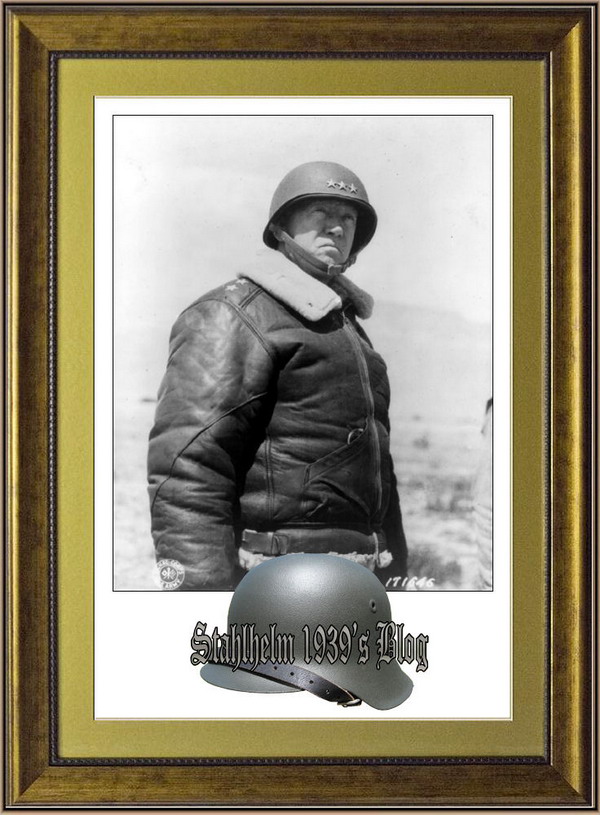
Patton was commissioned in the U.S. Army upon graduation from the U.S. Military Academy at West Point in 1909. In 1916-17 he participated in the unsuccessful Pancho Villa Expedition seeking to capture the Mexican revolutionary. In World War I he was the first officer assigned to the new United States Tank Corps and saw action in France. After the war he was a strong advocate ofarmored warfare.
In World War II he commanded corps and armies in North Africa, Sicily, and the European Theater of Operations. Near the end of the Sicilian campaign he jeopardized his career by slapping a soldier recuperating from battle fatigue at a hospital, whom he regarded as a coward. Relieved of his command by Allied Supreme Commander General Dwight D. Eisenhower over the well-publicized incident, Patton was relegated to acting as a decoy in Operation Quicksilver instead of playing a major part in theNormandy Landings and Operation Overlord. However, he was later given command of the U.S. Third Army and ably led it in breaking out of the hedgerows of Normandy and across France. A surprise German offensive at the Battle of the Bulge resulted in American units being surrounded in Bastogne, but Patton rapidly disengaged his army from fighting in another sector and moved it over 100 miles in 48 hours to relieve the siege.
25 aprilie 2010 | Categories: 1939..., 1940..., 1942..., 1944..., 1945..., Aducere-Aminte..., Andrei D.MITUCA..., Articol Imprumutat Cuminte..., Articol Propriu..., Campanii Militare Celebre..., Cercetare si Creatie Militara..., COMEMORARE ca dispret pentru UITARE..., Credinte..., GENERALI CELEBRII..., GENII MILITARE..., GENII..., Idei Mistuitoare..., Ideographie..., Imaginatie MILITARA..., Imaginile VREMII..., ISTORIE Nepatrunsa..., Istorii NEAPUSE..., Lucruri care nu se POT UITA..., Mari STRATEGI..., OBSESII care au schimbat LUMEA..., Personalitati MILITARE..., Preocuparile POPOARELOR..., Puterea DOCTRINEI..., Puterea IMAGINII..., Sarbatoarea VICTORIEI..., Simboluri MILITARE..., Simboluri..., StahlHelm..., State Beligerante..., Thomas Robert MALTHUS..., U.S.Army..., Uniforme MILITARE..., WorldWar II... | Lasă un comentariu
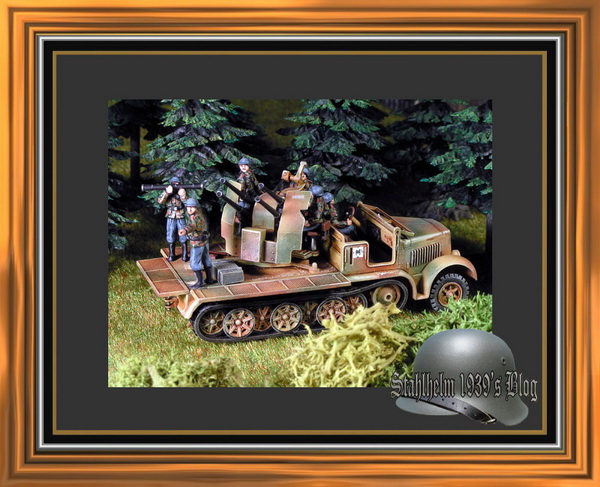
25 aprilie 2010 | Categories: 1940..., 1942..., 1944..., 1945..., Aducere-Aminte..., AfrikaKorps..., Andrei D.MITUCA..., Articol Propriu..., BlitzKrieg..., Campanii Militare Celebre..., Cercetare si Creatie Militara..., Credinte..., Disciplina GERMANA..., Friedrich SCHILLER..., Idei Mistuitoare..., Ideographie..., Imaginatie MILITARA..., Imaginile VREMII..., ISTORIE Nepatrunsa..., Istorii NEAPUSE..., Nevoile GERMANIEI MARI..., OBSESII care au schimbat LUMEA..., Personalitati MILITARE..., Preocuparile POPOARELOR..., Puterea IMAGINII..., Sarbatoarea VICTORIEI..., Simboluri MILITARE..., Simboluri..., StahlHelm..., State Beligerante..., Tehnika MILITARA..., Thomas Robert MALTHUS..., Uniforme MILITARE..., Wehrmacht..., WorldWar II... | Lasă un comentariu
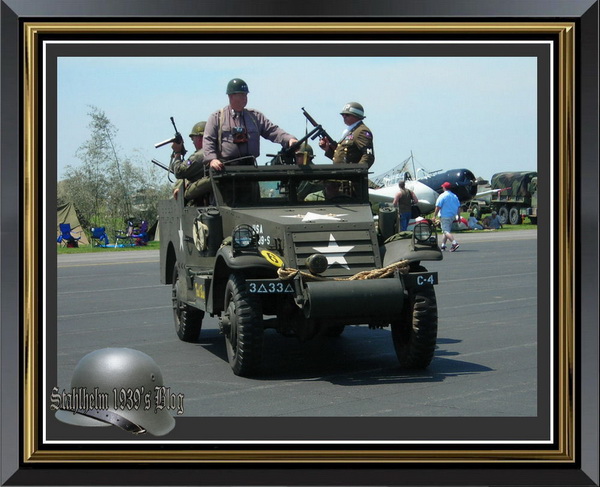
25 aprilie 2010 | Categories: 1940..., 1942..., 1944..., 1945..., Aducere-Aminte..., Andrei D.MITUCA..., Articol Propriu..., BlitzKrieg..., Campanii Militare Celebre..., Cercetare si Creatie Militara..., Credinte..., GENII MILITARE..., Idei Mistuitoare..., Ideographie..., Imaginatie MILITARA..., Imaginile VREMII..., ISTORIE Nepatrunsa..., Istorii NEAPUSE..., Lucruri care nu se POT UITA..., Simboluri MILITARE..., Simboluri..., StahlHelm..., State Beligerante..., Tehnika MILITARA..., Thomas Robert MALTHUS..., U.S.Army..., Uncategorized, Uniforme MILITARE..., WorldWar II... | Lasă un comentariu
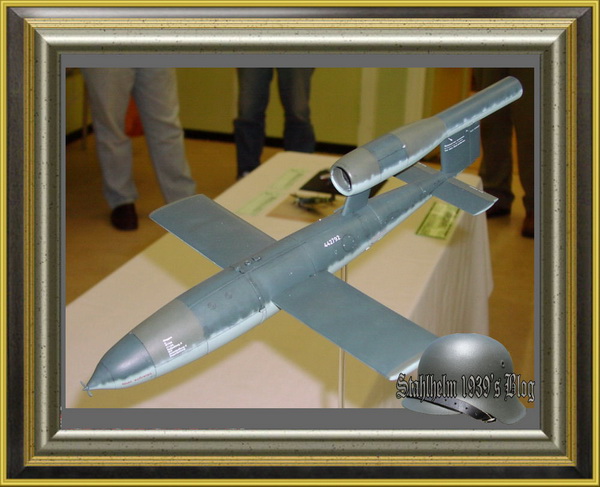
25 aprilie 2010 | Categories: 1944..., 1945..., Aducere-Aminte..., Andrei D.MITUCA..., Articol Propriu..., BlitzKrieg..., Idei Mistuitoare..., Ideographie..., Istorii NEAPUSE..., LuftWAFFE..., OBSESII care au schimbat LUMEA..., Preocuparile POPOARELOR..., Puterea DOCTRINEI..., Puterea IMAGINII..., Sarbatoarea VICTORIEI..., Simboluri MILITARE..., Simboluri..., StahlHelm..., State Beligerante..., Tehnika MILITARA..., Uncategorized, Wehrmacht..., WorldWar II... | Lasă un comentariu
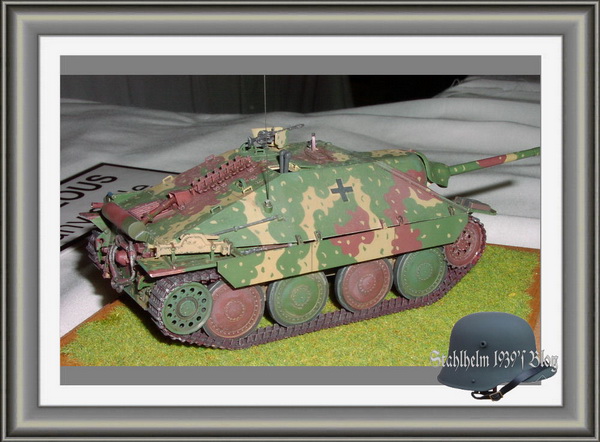
24 aprilie 2010 | Categories: 1939..., 1940..., 1942..., 1944..., 1945..., Aducere-Aminte..., AfrikaKorps..., Andrei D.MITUCA..., Articol Propriu..., Idei Mistuitoare..., Ideographie..., Istorii NEAPUSE..., OBSESII care au schimbat LUMEA..., Preocuparile POPOARELOR..., Simboluri MILITARE..., Simboluri..., StahlHelm..., State Beligerante..., Tehnika MILITARA..., Thomas Robert MALTHUS..., Uncategorized, Wehrmacht..., WorldWar II... | Lasă un comentariu

24 aprilie 2010 | Categories: 1939..., 1940..., 1942..., 1944..., 1945..., Aducere-Aminte..., Andrei D.MITUCA..., Articol Propriu..., BlitzKrieg..., Campanii Militare Celebre..., Cercetare si Creatie Militara..., Idei Mistuitoare..., Ideographie..., Istorii NEAPUSE..., OBSESII care au schimbat LUMEA..., Preocuparile POPOARELOR..., Simboluri MILITARE..., Simboluri..., WorldWar II... | Lasă un comentariu

24 aprilie 2010 | Categories: 1939..., 1940..., 1942..., 1944..., 1945..., Aducere-Aminte..., AfrikaKorps..., Andrei D.MITUCA..., Articol Propriu..., Idei Mistuitoare..., Ideographie..., Istorii NEAPUSE..., OBSESII care au schimbat LUMEA..., Preocuparile POPOARELOR..., Simboluri MILITARE..., Simboluri..., StahlHelm..., State Beligerante..., Tehnika MILITARA..., Thomas Robert MALTHUS..., U.S.Army..., WorldWar II... | Lasă un comentariu

24 aprilie 2010 | Categories: 1939..., 1940..., 1942..., 1944..., 1945..., Aducere-Aminte..., AfrikaKorps..., Andrei D.MITUCA..., Articol Propriu..., Idei Mistuitoare..., Ideographie..., Istorii NEAPUSE..., OBSESII care au schimbat LUMEA..., Preocuparile POPOARELOR..., Simboluri MILITARE..., Simboluri..., StahlHelm..., State Beligerante..., Tehnika MILITARA..., Thomas Robert MALTHUS..., Wehrmacht..., WorldWar II... | Lasă un comentariu

22 aprilie 2010 | Categories: 1940..., 1942..., 1944..., 1945..., Aducere-Aminte..., AfrikaKorps..., Andrei D.MITUCA..., Articol Propriu..., BlitzKrieg..., Campanii Militare Celebre..., Cercetare si Creatie Militara..., COMEMORARE ca dispret pentru UITARE..., Credinte..., Disciplina GERMANA..., Friedrich SCHILLER..., Idei Mistuitoare..., Ideographie..., Imaginatie MILITARA..., Imagini de pe Front..., Imaginile VREMII..., ISTORIE Nepatrunsa..., Istorii NEAPUSE..., Lirica GERMANA..., Lucruri care nu se POT UITA..., Nevoile GERMANIEI MARI..., OBSESII care au schimbat LUMEA..., Parada Militara..., Preocuparile POPOARELOR..., Puterea DOCTRINEI..., Puterea IMAGINII..., Sarbatoarea VICTORIEI..., Simboluri MILITARE..., Simboluri..., StahlHelm..., State Beligerante..., Tehnika MILITARA..., U.S.Army..., Uniforme MILITARE..., WorldWar II... | Lasă un comentariu
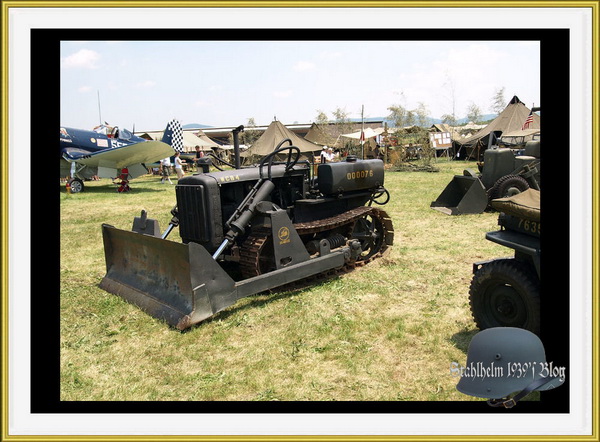
22 aprilie 2010 | Categories: 1942..., 1944..., 1945..., Aducere-Aminte..., Andrei D.MITUCA..., Articol Propriu..., Campanii Militare Celebre..., Cercetare si Creatie Militara..., COMEMORARE ca dispret pentru UITARE..., Credinte..., Idei Mistuitoare..., Ideographie..., Istorii NEAPUSE..., OBSESII care au schimbat LUMEA..., Preocuparile POPOARELOR..., Simboluri MILITARE..., Simboluri..., WorldWar II... | Lasă un comentariu









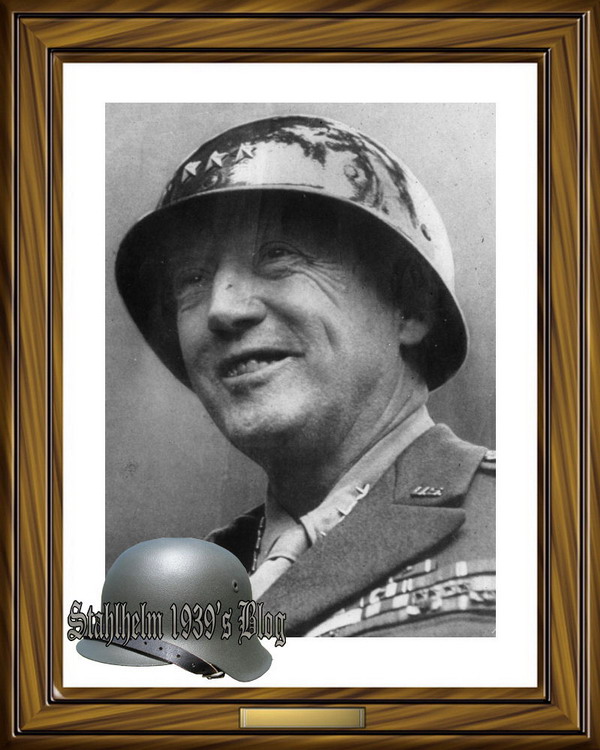






















Comentarii recente